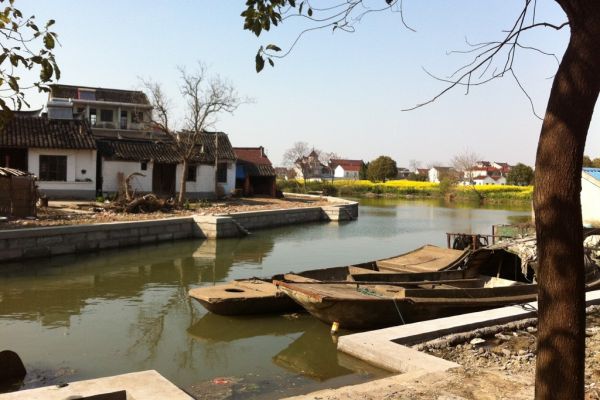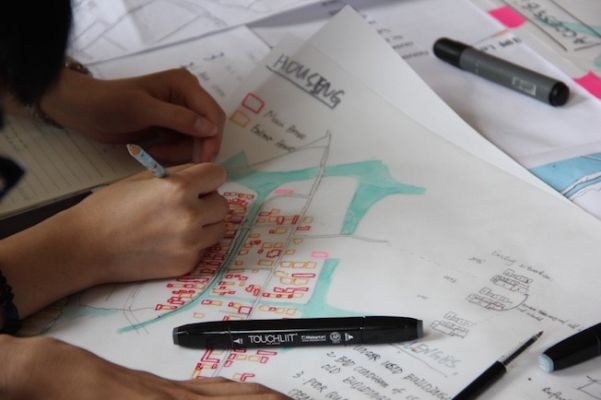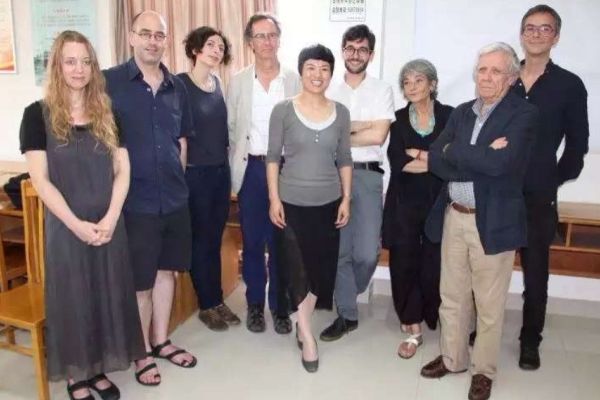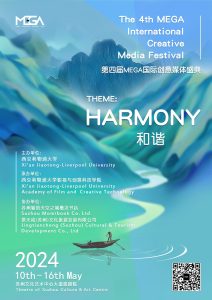August 17, 2015
Urban planning and architecture experts from Xi’an Jiaotong-Liverpool University have been working with people living in a village in China to plan the future development of their home.
The team of experts has been working in residents of Shuang Wan village in the Wujiang District of Suzhou, adopting the UNESCO Historic Urban Landscape approach to managing urban landscapes and territorial changes.
The approach promotes sustainable urban development models by preserving local identities and involving local people in decision-making processes.
Shuang Wan is one of few villages in China that are adopting the Historic Urban Landscape approach in order to achieve balanced and inclusive development based on local needs and resources.

The team’s action-research work was commissioned by the Suzhou local government and coordinated by Dr Giulio Verdini, Co-Director of the Research Institute of Urbanisation at XJTLU.
Working closely with locals the team conducted a preliminary study of the area, defining different scenarios for the village’s future sustainable rural development.
The work was carried out during a residential workshop organised in cooperation with the International Laboratory of Architecture and Urban Design (ILAUD), a non-profit organisation that coordinates design workshops around the world.
A strategic masterplan for the village’s development was presented to residents and relevant stakeholders after the workshop. It outlined potential plans for the introduction of new more-profitable agricultural products, the conservation of existing resources and heritage, and the development of low-impact tourism and local creative industries based on the local textile tradition.
Based on feedback received during the presentation, the research team is now working on a final proposal to be submitted to local government for approval. Other meetings with Shuang Wan residents are scheduled in order to test the feasibility of the detailed proposals.

Work on the project was the result of the signing of a Memorandum of Understanding between the Research Institute of Urbanisation and UNESCO-WHITRAP (World Heritage Institute of Training and Research in the Asia-Pacific Region) in December 2014.
Dr Verdini said: “It was so rewarding to see the agreement between XJTLU and UNESCO come to fruition in Shuang Wan village.
“Using the Historic Urban Landscapes approach we were able to develop potential plans that balance the area’s social and economic development needs with its goals for heritage conservation.
“Working with villagers and relevant stakeholders in Shuang Wan in this way allows us to shift the focus from the village’s physical architecture to the conservation of the values that underpin the life of the village. This first case will pave the way for the wider application of this approach across China and abroad.
“One of urban planning’s key challenges, especially here in China, is how unprecedented urbanisation can be balanced with sustainable development that not only benefits an area’s physical architecture and landscape but also the people who live there.”
The team consisted of XJTLU academic staff and students with backgrounds in architecture and urban planning, including Professor Heini Shi, from International Business School Suzhou, Professor Pierre-Alain Croset, Head of the Department of Architecture, Dr Chris Nolf from the Department of Urban Planning and Design, and Dr Claudia Westermann from the Department of Architecture.

Professor Croset said: “This workshop offered exceptional conditions to answer to real problems in a holistic fashion. By using a small village as case study, we demonstrated that other ways of urbanisation are possible in China, and that modernisation can be grounded in the sense of place and specific cultural identities of localities.”
External members included Dr Francesca Frassoldati from South China University of Technology and Harry den Hartog from Tongji University, who guided students taking part in the project though the process of using the Historic Urban Landscape approach.
Professor Paolo Ceccarelli, from the ILAUD and who is also UNESCO chair in urban and regional planning for local sustainable development at the University of Ferrara, said: “This was an extremely interesting experience and the lessons we learnt from applying the approach in this small village go beyond the boundaries of China.
“It is now important to raise visibility worldwide of this unique experience in local development and participation.”
A research report has been submitted and information regarding the pilot case will be posted on the Historic Urban Landscape website.
August 17, 2015







